-
About
- About Listly
- Community & Support
- Howto
- Chrome Extension
- Bookmarklet
- WordPress Plugin
- Listly Premium
- Privacy
- Terms
- DMCA Copyright
- © 2010-2025 Boomy Labs

Listly by sb04889

Students explore what it means to take on responsibilities in both their offline and online communities as a way to learn how to be good digital citizens. Students sit in circles, which depict the “Rings of Responsibility,” in order to explore the responsibilities they have to themselves, friends and family, and larger communities, both offline and online.

As students visit sites that request information about their identity, they learn to adopt a critical inquiry process that empowers them to protect themselves and their families from identity theft. In this lesson, students learn to think critically about the user information that some websites request or require. They learn the difference between private information and personal information, distinguishing what is safe and unsafe to share online.
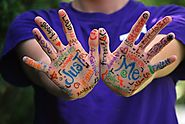
Students consider that they may encounter online messages from other kids that can make them feel angry, hurt, sad, or fearful. They explore ways to handle cyberbullying and how to respond in the face of upsetting language online. Students discuss all the ways they use technology for communication, put themselves in the shoes of children who are cyberbullied on a kids’ game website, and explore both the similarities and differences between in-person versus online communication. Students then brainstorm ways to respond to cyberbullying.

Students learn strategies to increase the accuracy of their keyword searches. They compare the number and kinds of sites obtained and make inferences about the effectiveness of the strategies. Working in pairs, students use the Fetch! Student Handout to answer an assigned question. They use one, two, then multiple keywords, and discover that when it comes to keyword searches, more words are better than one. Using the Doggy Data Student Handout, students then devise their own search strategies to find information, using multiple keywords, synonyms, and alternative words and phrases.

Students learn that although the Internet makes it very easy, copying the work of others and presenting it as one’s own is called plagiarism. They also learn about circumstances in which it is permissible to use the work of others. Students are first introduced to the feeling of having someone pretend to have written work they created. Then they judge whether or not different situations involving students and schoolwork are acceptable. Students are introduced to proper ways to cite people’s words and ideas from the Internet, including how to write a citation.

An original lesson developed by participants at the Oregon Leadership Teacher Institute, this lesson focuses on identifying the differences between autocratic, democratic, and laissez-faire leadership styles.
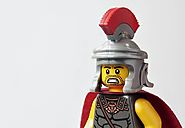
An original lesson developed by participants at the TASSP/TASC Student Leadership Course Teacher Academy, this lesson focuses on defining what leadership looks like in the students' eyes.
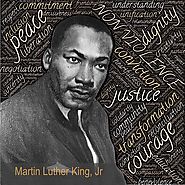
An original lesson developed by participants at the MASSP/MASC/MAHS Leadership Class Academy, this lesson engages students in a discussion of qualities of leadership and invites them to consider what qualities are most important for an effective leader.

This lesson from veteran leadership class teacher Karen Dawson (Washington, MO) asks students to find a song with a leadership message and relate it to themselves. This song form accompanies the lesson.
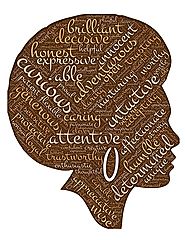
This lesson introduces the main principles of leadership and helps students define some of the key attributes of an effective leader.

Teams are challenged to develop a creative method to solve the problem.
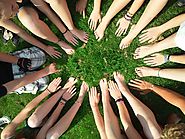
Objects are scattered in an indoor or outdoor place. In pairs, one person verbally guides his/her partner, a blindfolded person, through the minefield.

A group tries to create a unified story from a set of sequential pictures. The pictures are randomly ordered and handed out. Each person has a picture but cannot show it to others. Requires patience, communication, and trying to understand from another's point of view in order to recreate the story's sequence.
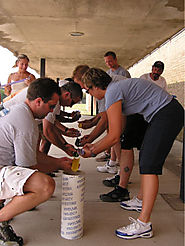
A fast paced activity that can be modified to suit age and setting. Each participant gets one gutter or half pipe tubing. The object is to move a marble or assorted size balls using lengths of guttering from point A to point B without dropping them.
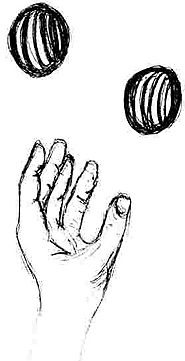
A team building exercise based on the icebreaker "Group Juggle". Groups are challenged to juggle as fast as possible. Invite group to "tender" a time they can deliver.

Group activities that can be done with balloons. Promotes gentle, fun physical movement, people getting to know one another, trust and working together.

A classic teambuilding activity in which a group is challenged to physically support one another in an endeavor to occupy an ever diminishing space.

The Marshmallow Challenge is a remarkably fun and instructive design exercise that encourages teams to experience simple but profound lessons in collaboration, innovation and creativity.

Students will be able to use historical knowledge and digital literacy skills to tweet clues and guess the historical figure, period, or event.

Students will be able to communicate with someone else using only their verbal communication skill, and then evaluate the success of their skills. They will also be able to discuss how communication skills apply in everyday life.

Student entrepreneurs experience business, calculate profit, and develop an understanding of “economic growth” as settlers in a new community in this multidisciplinary activity.

Youth Deployment Activity Guide is designed to provide age appropriate resources that are helpful in teaching children about emotions. The sections include Intrapersonal Skills, Interpersonal Skills,
Adaptability, Stress Management and General Mood. Each section is further divided into sub-skills that address such things as Problem Solving, Happiness, Flexibility and other critical emotional and social competencies.